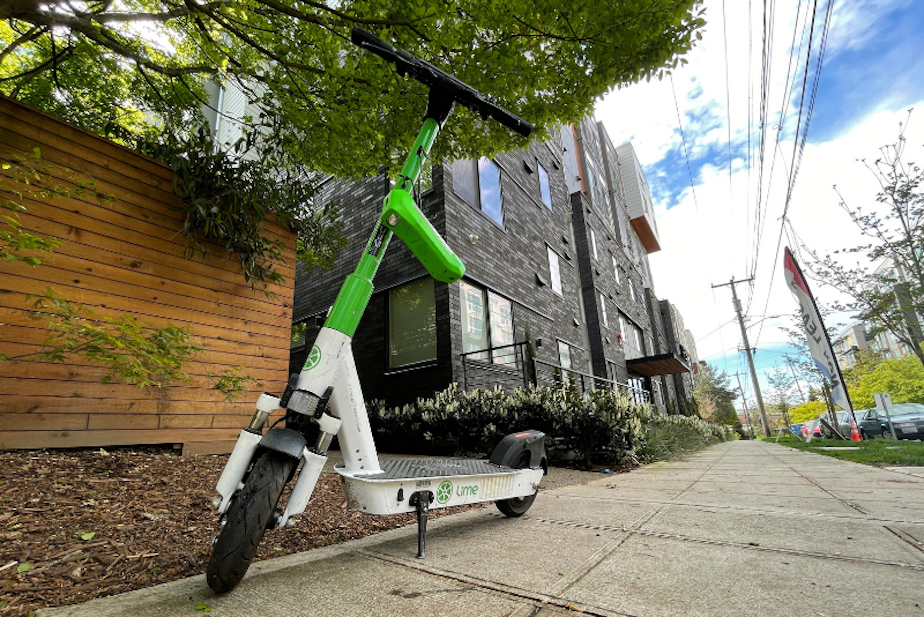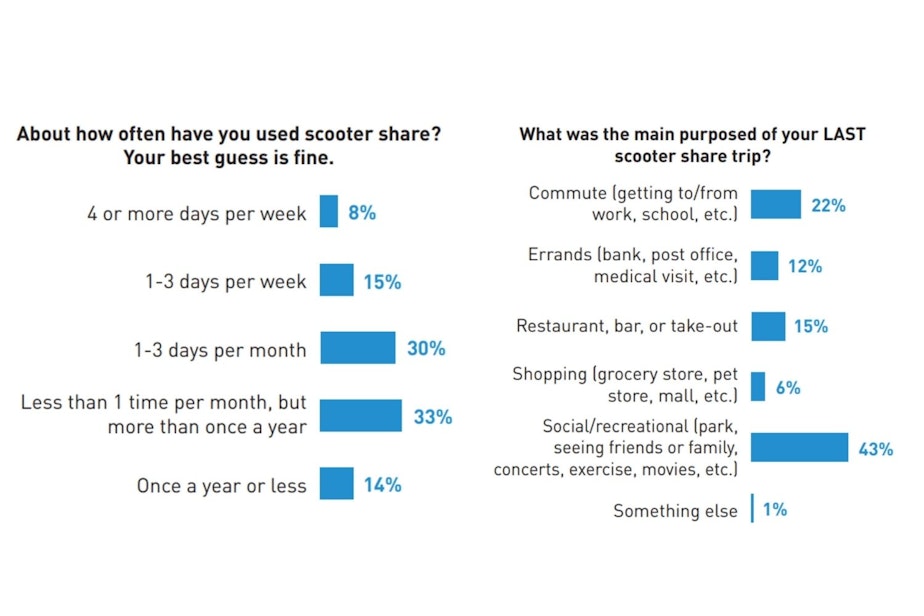Why more e-scooters are slated for Seattle streets

The city of Seattle will allow a new scooter share program following a recent report on their use, so far, within the city. Companies will now compete to be among the few operators allowed in Seattle.
Four scooter share permits are now up for grabs in Seattle — which is exactly the number of scooter companies involved in Seattle's recent scooter share pilot (Lime, Link, Spins, and Wheels). The city's Department of Transportation will decide which vendors will be awarded the permits. SDOT said in a statement they are "asking companies to provide a specific plan for how they plan to address challenges."
Such challenges include keeping scooters off sidewalks, parking them properly, and safety. Moving forward, SDOT aims to create more designated scooter parking areas, and implement fines on scooter customers if they cause "pedestrian obstructions." Such fines are likely to be $20 for each obstruction. SDOT notes that the fines may be passed on to the customer.
The decision comes after a recent report from SDOT, which dove into why and when people rode e-scooters during a pilot period between October 2020 and October 2021. And also, why some riders got hurt. It also evaluated strategies to keep riders safe and technology to keep sidewalks clear for pedestrians.
Sponsored
About 260,000 scooter customers took nearly 1.4 million trips during the pilot period. During that time, a peak of 5,100 scooters were available on Seattle streets (in September 2021). Most riders used them for social and recreation purposes. The second leading reason was to commute. About 21% used a scooter to connect to transit.
It seems Seattleites and visitors mostly used the e-scooters within the city's more popular hubs, such as the City Center, Ballard, Freemont, the University District, and Alki Beach.

E-scooters are not allowed to roll on city sidewalks. However, according to the report, 69% of riders reported that they chose where to ride based on where they felt safest.
Sponsored
"Those who say they rode on the sidewalk when there were a lot of cars on the road were more likely to say they rode in the street if there were a lot of people on the sidewalk," the report states.
11% of scooter riders in Seattle reported injuries
There are no reports of serious injuries to pedestrians due to scooter riders on the sidewalk. About 11% of riders, however, reported injuries. A total of 2.3% of surveyed riders received medical attention; 8% reported an injury but didn't bother getting medical attention.
Most reported injuries were minor and included "cuts, bruises, and abrasions that did not require medical care. This also included people hitting an ankle or shin on the scooter."
Slippery, rough roads were cited as factors along with bad lighting. Other riders cited injuries to interactions with cars.
Sponsored
"I was riding on a road with no bike lane, and a car behind me decided to pass me, and was pretty close to me," one anonymous survey respondent stated. "I flinched and the whole scooter wobbled and I fell on the sidewalk [better than falling towards the left/road]. Hand was pretty scratched up, but better than getting run over."
Sponsored
Most Seattle scooter riders don't wear a helmet
The report revealed that 70% of riders never wore helmets. The use of helmets varied widely by age, but younger riders are less likely to wear one. When asked reasons for not wearing one riders said they "were not wanting to carry a helmet around, not planning to use a scooter that day, and not owning a helmet."
According to the rules of the pilot program, vendors were required to implement a helmet distribution program and encouragement plan. However, during the user survey some riders were frustrated "about a perceived heavy focus on helmet use, preferring instead to focus on having safe places to ride."
SDOT also implemented safety strategies, first time riders are required to take a safety quiz. The first ride was also capped at 8 mph instead of 15 mph.
The report also revealed the use of geofences in an effort to tame bad riding and parking behavior. "Geofences" use GPS technology preventing riders from parking in some areas where riding is allowed, such as bridges. The Alki Waterfront in West Seattle is the largest geofenced area focused on improving parking habits.
Sponsored
This technology also prevents riders in prohibited areas like inside parks or the University of Washington Campus. But riders reported that these n-riding zones were confusing at times. Riders also said "geofences may cause unsafe situations if scooters shutoff unexpectedly."
Read more insights from the pilot program's survey here.




